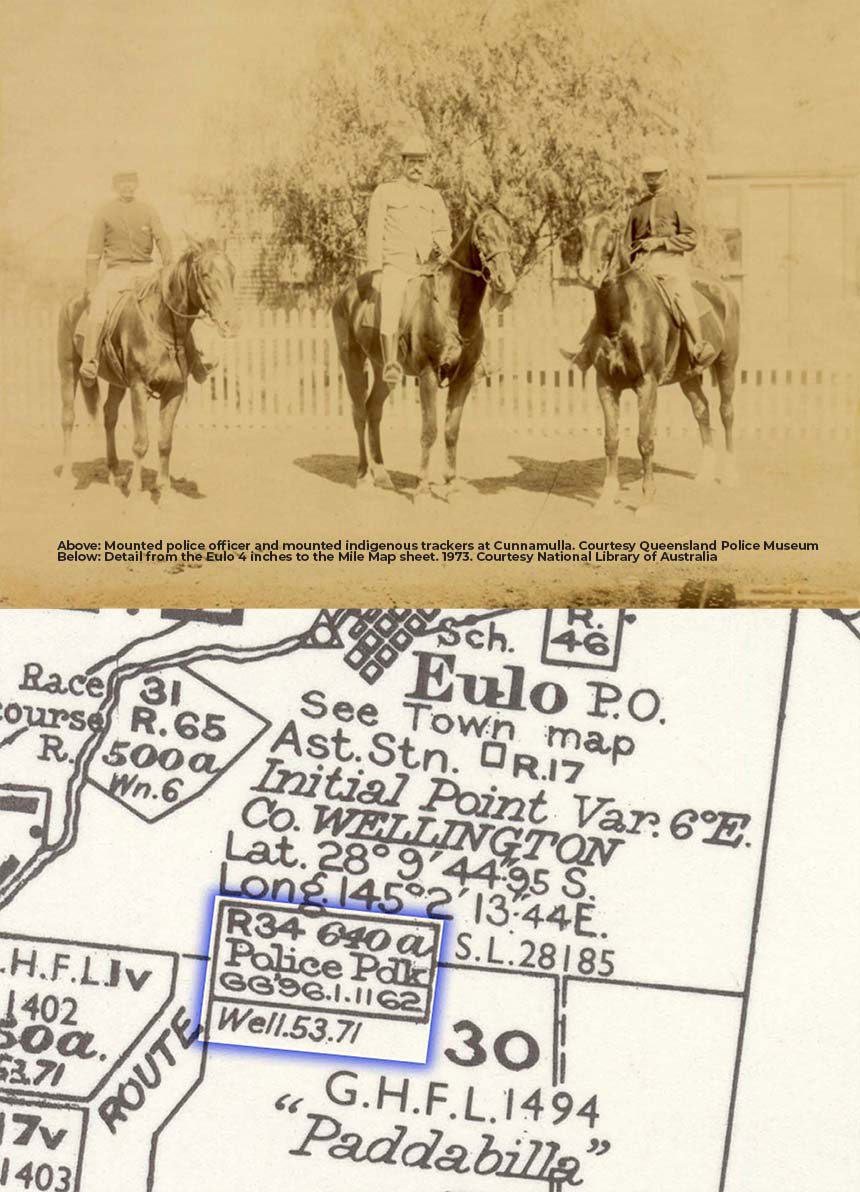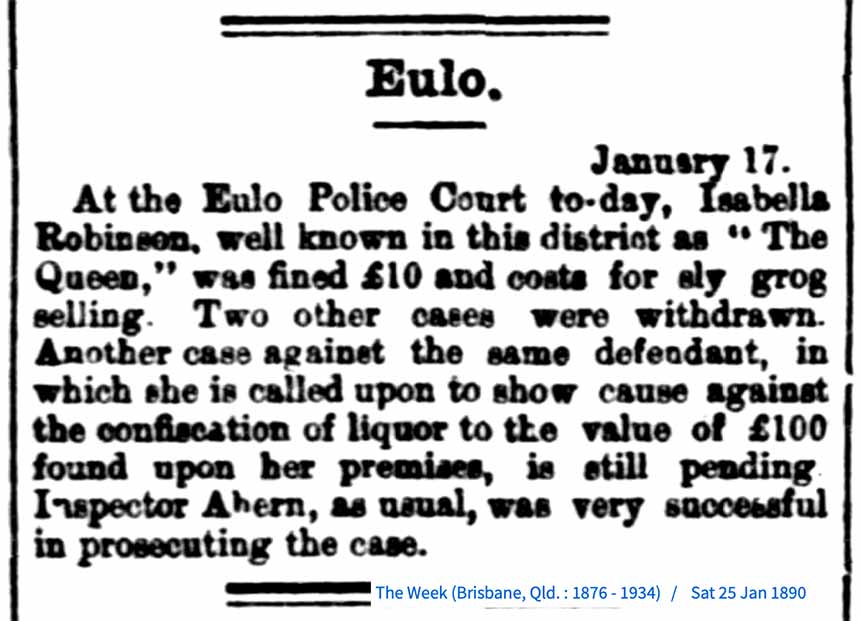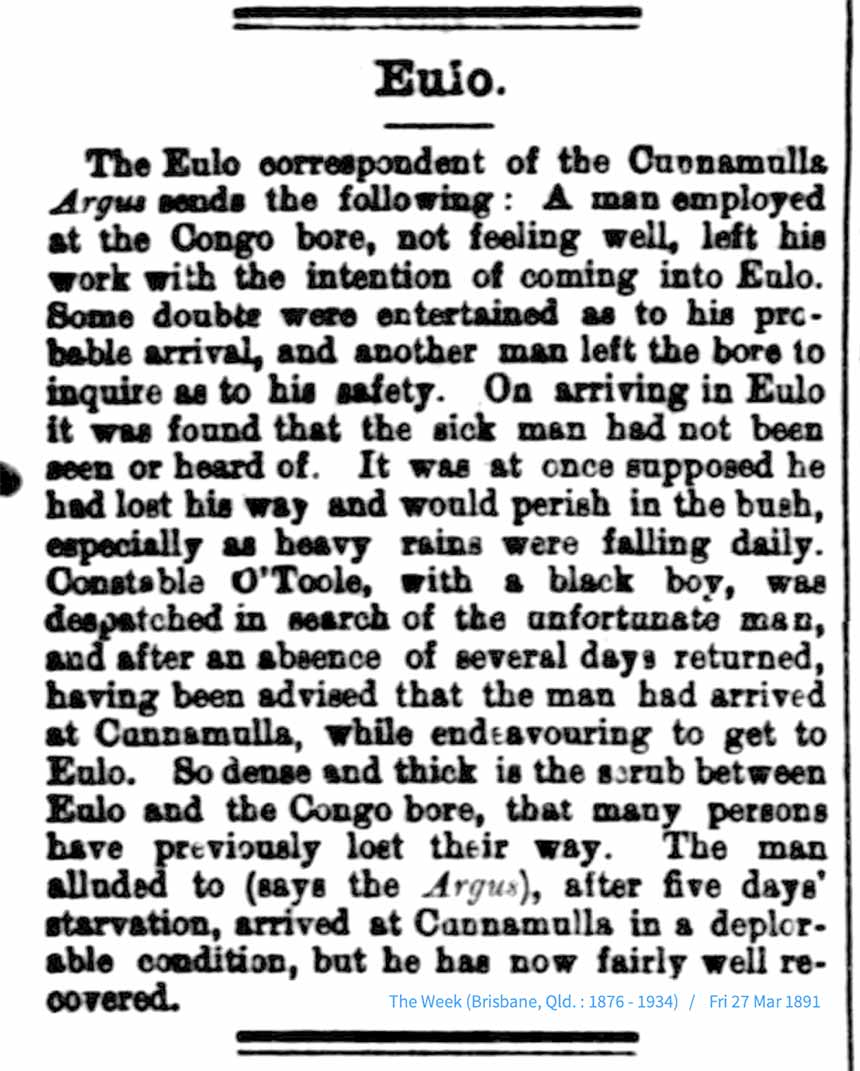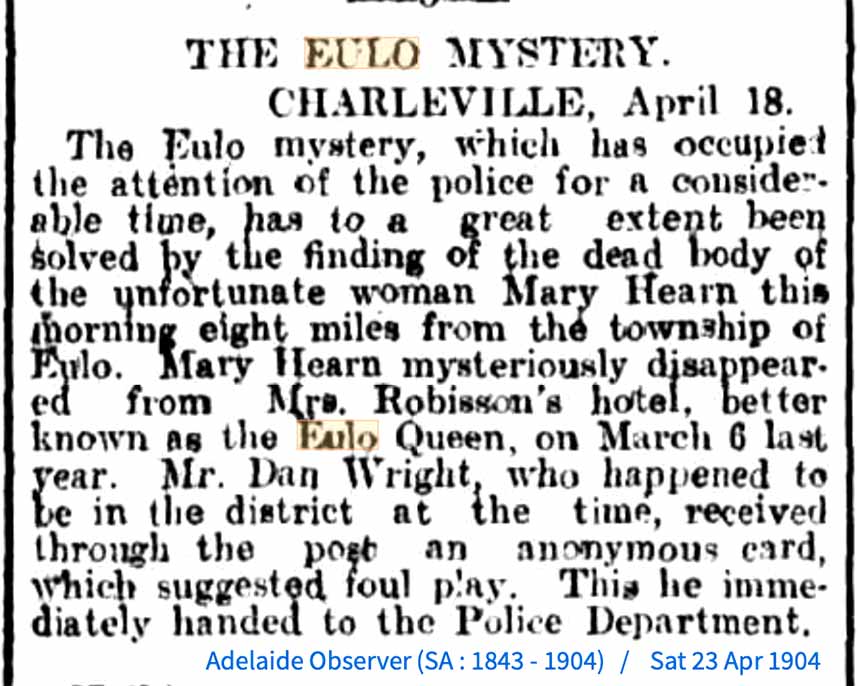POLICING THE PAROO MULGA LANDS



These police cells saw 90 years of active duty here in Eulo from the time they were built in 1923 through until they were decommissioned and moved to this location in 2014.
Today they remind us of a vibrant time in the town’s history in the wake of the First World War. Then increasing use of motor vehicles coupled with the sinking of artesian bores saw an influx of new locals as the Paroo’s great mulga lands holdings were broken up for closer settlement.
Gone were the somewhat wild days of the 1890s when opal miners would flock to town for the Eulo race meeting and the chance to drink and fraternise at the town’s hotels. Gone also was the Eulo Queen – Isabel Gray.
After three decades of ensuring liquor licensing offences kept the local constabulary busy she had moved to Toowomba in tragic circumstances.
The investment in the reconstructed police station here in the mid 1920 reflected the central role Eulo was set to continue to play in the life of the Paroo mulga lands.
While this cell block provided the essential infrastructure the police needed to do their work, then as now, their daily rounds had as much to do with misadventure and accidents as it did with dealing with felons.
Interestingly also is that this cell block harks back to the early 1900s when horses were still the mainstay of outback operations.
As this photo below taken in Cunnamulla in 1900 shows, Aboriginal trackers provided a vital local resource that local officers could call on when needed. Here the search for for missing travellers was a recurring theme.

Up until the early 1960s, individual police stations had their own stables and paddocks in which to keep their troop horses. The police paddock here at Eulo was located south of the town beside a well on the main stock route.


